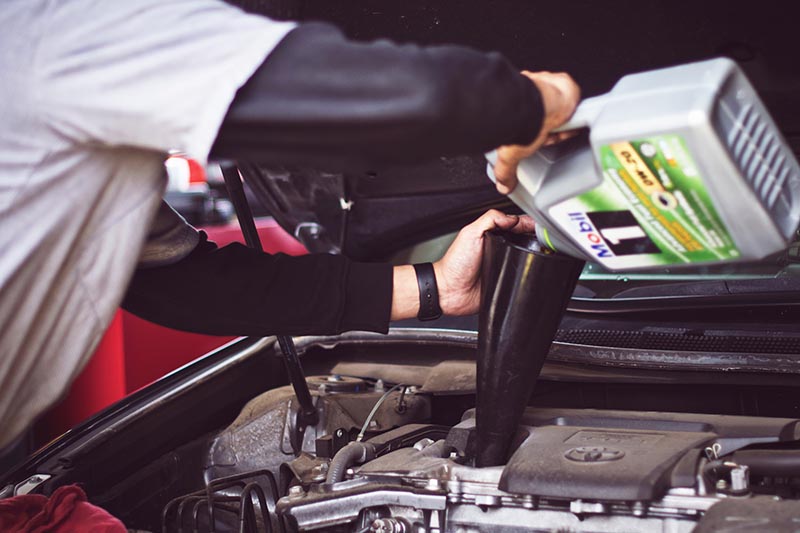
ILSAC revises request for a new ILSAC GF-7 oil category
The International Lubricants Standardization and Approval Committee (ILSAC) sent a revised letter outlining the needs of original equipment manufacturers (OEMs) and proposed targets for the new ILSAC GF-7 engine oil category to the Automotive Oil Advisory Panel (AOAP) and American Petroleum Institute (API) Lubricant Standards Group Chairs on March 10, 2023. The document revises the original ILSAC request from August 16, 2022.

In the letter, ILSAC asked for a first licensing date for the new gasoline oil category “as early as the end of first quarter 2025.” ILSAC modified its request to support U.S. Environmental Protection Agency (EPA) fuel economy improvements by modifying engine and bench tests to further improve passenger car engine oils for North America.
Despite the absence of confirmed GF-7 requirements until now, work is already well underway on the new engine oil standard.
Mike Deegan, ILSAC chair, outlined the new requirements during an AOAP meeting in Detroit, Michigan, U.S.A., on April 13, 2023. ILSAC is seeking improvements in the following:
- Fresh oil MRV will be targeted to 40,000cP
- Sequence IIIH: Further reduction in piston deposits only
- Sequence VIE/F: FEI sum and FEI 2 fuel economy improvements
- Sequence IX: Addition of aged oil LSPI requirements
- Sequence X: Reduce chain wear to 0.080 maximum
- Sulfated Ash: Add 0.90% maximum
- New Oil Gelation Procedure: ASTM D6795
- Add ACM-2, AEM-2, AEM-3, and FKM-3 to ASTM D7216 Annex A2 Seal Testing
New oil mini-rotary viscometer (MRV), fuel economy improvements and the addition of aged oil low-speed pre-ignition (LSPI) are the primary needs of GF-7.
ILSAC GF-8
ILSAC’s request also detailed several parallel actions in preparation for the next category after ILSAC GF-7, ILSAC GF-8, and the future end-of-life of some tests. Support is needed to replace the Sequence V and VI test engines by 2028 as they will require an updated engine platform. Additionally, a review of Sequence IX and Sequence X engines is necessary to ensure availability after 2028.
The document also highlighted great variability in current seal testing that does not reflect real-world application. For ILSAC GF-8 there will be a request to change from using ASTM D7216 to SAE J2979 for seal evaluation testing.
Evaluation of Noack temperature reduction will be requested from 250°C to 150°C. SAE papers 2022-01-0525 and 2022-01-0524 demonstrate the improved correlation between engine operation and the modified Noack bench test.
In his review of the two ILSAC Draft Specifications of ILSAC GF-7A and ILSAC GF-7B Recommendations For Passenger Car Engine Oils, Deegan noted that they are the early versions and will likely be updated multiple times in the future.
Darryl Purificati, co-chair of AOAP, provided a draft timeline on ILSAC GF-7 developments. Since GF-7 timings are still rough at this time, it is expected that they may need to be adjusted later. However, achieving first licensing in early 2025 appears challenging unless the technology demonstration period and mandatory waiting periods are adjusted.
Earlier AOAP meetings have provided specific information on some of the tests which may be included in the draft ILSAC GF-7 specification.
JASO Fuel Economy Tests

Inclusion of JASO M366, Automobile Gasoline Engine Oils – Firing Fuel Economy Test Procedure, in ILSAC GF-7 was discussed. The test is viewed as the best and quickest approach for measuring fuel economy for low-viscosity grade engine oils, specifically SAE 0W-8 and 0W-12. JASO’s standard requirements such as test methods, precision and limits are already determined and available to measure low viscosity oil fuel economy, although SAE 0W-8 and 0W-12 viscosity grades are not currently included in the draft GF-7 specification.
New Engine Oil Gelation Test
Ford Motor Company uncovered issues relating to engine oil gelation due to prolonged vehicle storage in the early stages of COVID-19. Vehicle faults relating to oil pressure were reported with vehicles exhibiting a gel on the oil pump inlet/filter. Elevated amounts of water in the oil from multiple starts are believed to have made the calcium detergent drop out and form a gel, blocking filters and passages in the engine. The issue is predominantly in European vehicles which did not use an ILSAC GF-6 type oil.

A new Engine Oil Gelation bench test procedure has been proposed. It is based on ASTM D6795—a standard test method for measuring the effect on the filterability of engine oils after treatment with water and dry ice and a short heating time. While the ASTM D6795 and ASTM D6794 tests did not replicate the issue, an addendum to the ASTM procedure was proposed, based on SAE technical paper 881588, “A Study on Needle Crystals Formation in Engine Oils Containing a Magnesium-Based Detergent.”
The Design of Experiment (DOE) has been completed. Four samples are preconditioned using the SAE paper method (4% water instead of 1%) with varied storage times of two weeks, one month, three months and six months. A draft of the gelation test specification has been produced but an evaluation needs to be agreed to by ASTM.
Sequence VIII Engine Test
The Sequence VIII engine test evaluates the performance of a lubricant in preventing copper/lead/tin bearing corrosion and measures viscous shear stability under high-temperature operating conditions using unleaded gasoline. There are concerns that the Sequence VIII Engine Test may be approaching end of life.
The best approach may be to keep Sequence VIII in GF-7. There are enough bearings for GF-7 and Sequence VIII could “hold on a while” if we need it, says Bill Buscher of Intertek. AOAP says there are several Sequence VIII replacement options under consideration, although they may not meet the GF-7 timeline. Decisions need to be made soon to ensure it does not become a rate-limiting step, with an ASTM ballot under consideration for June 2023.
Sulphated Ash
The D129 Sulphated Ash Bench Test is a known ASTM test method and is already included in some OEM specifications. ILSAC GF-7 includes sulphated ash with a 0.90% maximum requirement.
Noack Volatility
The Noack volatility test, named after Kurt Noack, determines the evaporation loss of lubricants in high-temperature service. This test is standardized as ASTM D5800. The test method covers four procedures for determining the evaporation loss of lubricating oils, particularly engine oils. The evaporation measured is reported as percent total loss. The test method relates to one set of operating conditions but may be readily adapted to other conditions as required.
A bench test procedure is being evaluated at 150°C for an improved engine-to-bench correlation, although it may take some time to develop. Noack will remain at 250°C for GF-7, meaning it is simply an OEM limit in addition to GF-7.
SAE papers 2022-01-0524 and 2022-01-0525 demonstrate the improved correlation between engine operation and the modified Noack bench test.








